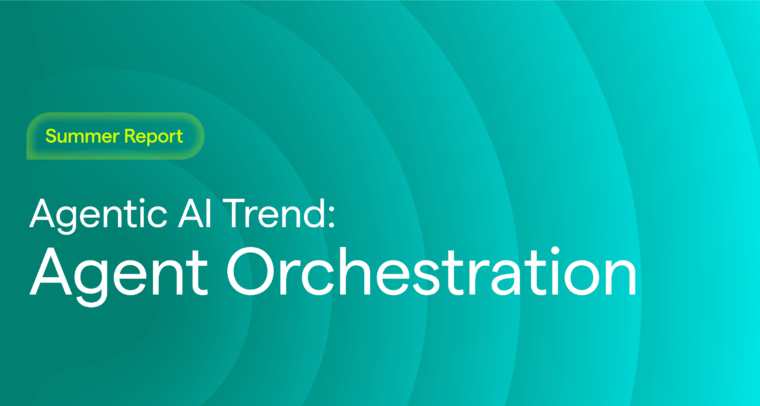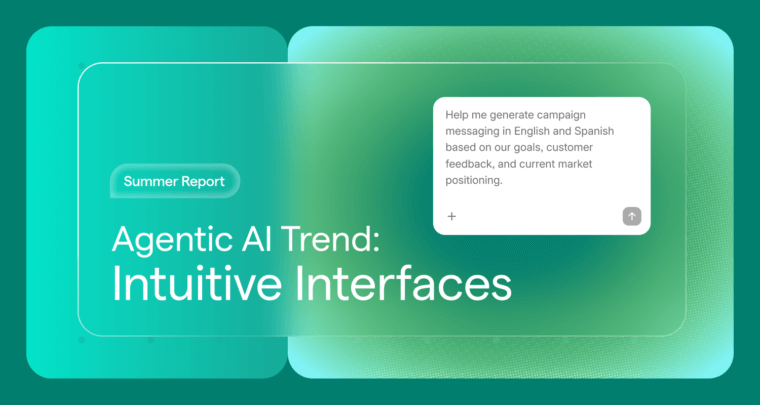GPT-4o is the latest advancement from OpenAI, bringing the most updated multimodal AI capabilities to platforms like ChatGPT. This guide will explain what GPT-4o is, how it operates, and the various ways it can enhance interactions and productivity across different applications.
Table of contents
- What is GPT-4o?
- How does GPT-4o work?
- GPT-4 vs. GPT-4 Turbo vs. GPT-4o
- Ways to use GPT-4o
- Benefits
- Limitations
- Conclusion
What is GPT-4o?
GPT-4o (the “o” stands for omni) is an advanced AI model developed by OpenAI, designed to power generative AI platforms such as ChatGPT. Unlike its predecessors, GPT-4o is the first version in the GPT series capable of processing text, audio, and images simultaneously. This multimodal capability enables the model to understand and generate responses across different formats much more quickly, making interactions more seamless and natural.
The introduction of GPT-4o marks a significant evolution from earlier GPT models, which primarily focused on text processing. With its ability to handle multiple input types, GPT-4o supports a broader range of applications, from creating and analyzing images to transcribing and translating audio. This versatility allows for more dynamic and engaging user experiences, whether in creative, educational, or practical contexts. GPT-4o opens up new possibilities for innovative AI-driven solutions by integrating these diverse capabilities into a single model.
How does GPT-4o work?
GPT-4o is a type of multimodal language model, which is an evolution of large language models (LLMs). LLMs are highly advanced machine learning models capable of identifying patterns in large amounts of text. Multimodal models can process text, images, and audio and return any of these as outputs.
The GPT series (and all generative AI) work by predicting the correct response to a user’s prompt. The predictions are based on the patterns that the model learns during training.
The model recognizes these patterns because of an element called a transformer. The transformer, which is what the “T” in GPT stands for, can process large amounts of information without the need for humans to label each piece of data. Instead, it identifies patterns and connections between bits of information. This is how it learns the structure and meaning of language, audio, and images.
This process is called pre-training. After the initial training stages, the model is then optimized to follow human input. At this stage, humans rate the responses so the model can learn which ones are most preferable. They also help teach the model how to avoid biased prompts and responses.
With the combination of the transformer, the training process, and reinforcement learning from human feedback, GPT-4o can interpret natural language and images and respond in kind.
How GPT-4o compares to earlier GPT-4 models
GPT-4o is significantly different from its predecessors, GPT-4 and GPT-4 Turbo.
More capabilities
One of the biggest differences between GPT-4o and previous models is the ability to understand and generate text, audio, and images at a remarkable speed. GPT-4 and GPT-4 Turbo can process text and image prompts, but they’re only capable of generating text responses by themselves. To integrate voice prompts and image generation, OpenAI had to combine GPT-4 and GPT-4 Turbo with other models, such as DALL-E and Whisper. GPT-4o, on the other hand, can process multiple media formats on its own, leading to a more coherent and faster output.
According to OpenAI, this provides a better experience because the model can process all information directly, allowing it to better capture nuances like tone and background noise.
Knowledge cutoff
GPT models are trained on existing data, so there is a cutoff date for how up-to-date their knowledge is. The knowledge cutoff date for each model is as follows:
- GPT-4: September 2021
- GPT-4 Turbo: December 2023
- GPT-4o: October 2023
Availability
Individual users can access GPT-4 and GPT-4o through ChatGPT. GPT-4o is available to free users, while GPT-4 requires a paid account. These models can also be accessed through the OpenAI API and the Azure OpenAI Service, which allow developers to integrate AI into their websites, mobile apps, and software.
Speed
GPT-4o is several times faster than GPT-4 Turbo, especially with respect to audio processing speed. With the previous models, the average response time for an audio prompt was 5.4 seconds since it combined the output of three separate models. The average response time for audio prompts with GPT-4o is 320 milliseconds.
Language performance
OpenAI says that GPT-4o matches GPT-4 Turbo in language processing and surpasses its predecessors in handling non-English languages.
Is GPT-4o free?
You can access GPT-4o for free through ChatGPT, but there are usage limits. OpenAI doesn’t specify what those limits are, but it does say that users with ChatGPT Plus have a message limit that is up to five times higher than free users. If you use GPT-4o through a Team or Enterprise-level subscription, the message limit is even higher.
Cost
GPT-4o, through the OpenAI API, costs half of what GPT-4 Turbo does, at $5 per 1 million input tokens and $15 per 1 million output tokens. A token is a unit used to measure an AI model’s prompts and responses. Each word, image, and piece of audio is broken down into chunks, and each chunk is a single token. An input of 750 words is approximately 1,000 tokens.
GPT-4o vs. GPT-4o mini: What’s the difference?
GPT-4o Mini is a new, more cost-effective version of GPT-4o, offering similar functionality at a significantly lower price. It is less expensive than even the previous generation of models while maintaining comparable performance. On many benchmarks, it competes favorably with models of similar size.
A key innovation in GPT-4o Mini is the use of an “instruction hierarchy” method, which enhances the model’s ability to handle adverse prompts and consistently provide favorable responses. Currently, GPT-4o costs $0.15 per 1 million input tokens and $0.60 per 1 million output tokens.
Ways to use GPT-4o
You can create content, engage in dialogue, perform research, and get help with everyday tasks with GPT-4o. Here’s a closer look at common use cases:
Engage in natural conversations
You can have a dialogue with GPT-4o using speech or text. Ask questions, chat about an interesting topic, or get advice on how to handle a problem. GPT-4o can incorporate nuances such as humor, sympathy, or sarcasm in its responses, making the conversation more fluid and natural.
Generate original content
With GPT-4o, you can generate original text-based content, such as emails, code, and reports. The model can be used at every stage of the creation process, from brainstorming to repurposing.
You may also want to explore other text-generation tools, like Grammarly, which allows you to generate original content within apps and websites you already use. Get personalized writing support right inside your word processing tool, email platform, project management system, and more.
Create and analyze images
GPT-4o can create original images to use for advertising, creative tasks, or education. Using its image analysis capabilities, you can ask it to describe a chart or photograph. GPT-4o can also turn an image of text, like a handwritten note, into text or speech.
Transcription and translation
With GPT-4o, you can transcribe audio from meetings, videos, or one-on-one conversations in real time and translate audio from one language to another.
Summarize and analyze existing content
GPT-4o has advanced reasoning capabilities that can be used to summarize and analyze data. For example, you can upload a long data report and ask for an overview of the key points that would appeal to a particular audience. The overview can be in the form of written text, audio, charts, or a combination of all three.
Assisting with common tasks
GPT-4o can assist you with simple tasks like creating to-do lists based on a meeting discussion, explaining a math equation, or helping you recall the name of a song or movie based on details you can remember.
GPT-4o benefits
GPT-4o’s multimodal capabilities, speed, and availability make it possible for a broad range of people to access a highly advanced AI model. Let’s take a closer look at these benefits.
Multimodal capabilities
GPT-4o’s multimodal capabilities represent a major advancement in generative AI. Previous GPT models relied on a combination of models to process speech, images, and text, which could lead to information loss in transit. With GPT-4o, the model can capture the full context of your prompts.
GPT-4o’s multimodal capabilities also make AI integration much more seamless on mobile devices, since you can point your camera at an object while speaking to GPT-4o.
Real-time responses
GPT-4o is fast, which is largely due to the model being trained end-to-end with audio, text, and images. Conversations can happen in real time, making interactions more natural, especially speech. Its speed makes it a powerful tool for translation and assistive applications, like speech-to-text and image-to-audio conversion.
Availability
GPT-4o is available for free through ChatGPT (albeit in a limited capacity), meaning that everyday users can access the capabilities of OpenAI’s most advanced model right away. This is especially beneficial to those who use it for assistive purposes since it removes barriers to access.
GPT-4o limitations
Despite its sophistication, GPT-4o has some drawbacks, some of which are due to its advanced nature. Let’s look at a couple of the model’s limitations.
Potential for misuse
As AI continues to advance, concerns about its misuse have become a central topic of discussion. OpenAI, along with technology experts, have noted that GPT-4o’s audio capabilities may help contribute to the growth of deepfake scams. Right now, OpenAI is mitigating this issue by only offering a limited number of voices to generate audio.
Privacy concerns
Privacy experts say that users should be aware of how OpenAI collects data and what the company does with that information. To use GPT-4o’s advanced capabilities, you grant it access to your screen, microphone, and camera. It can only access these items when you give it permission, but there are always additional risks when apps are allowed access to your device.
OpenAI is upfront about the fact that user data is used to train its models, but it says it doesn’t build a profile of you. To keep your data safe, avoid sharing sensitive information, like medical diagnoses and identification documents, with GPT-4o.
GPT-4o: Another milestone for generative AI
Like its predecessors, GPT-4o represents a major milestone in generative AI. With speech and image integration, it allows for even more natural, nuanced interactions than previous models. It’s highly accessible, so a wider range of people can use generative AI in new ways, from transcribing audio to visualizing data.
As with any innovative tech, it’s important to be mindful of privacy concerns and the potential for misuse.
However, if you explore GPT-4o with an experimental, open approach, it can be a valuable tool for accomplishing everyday tasks.






